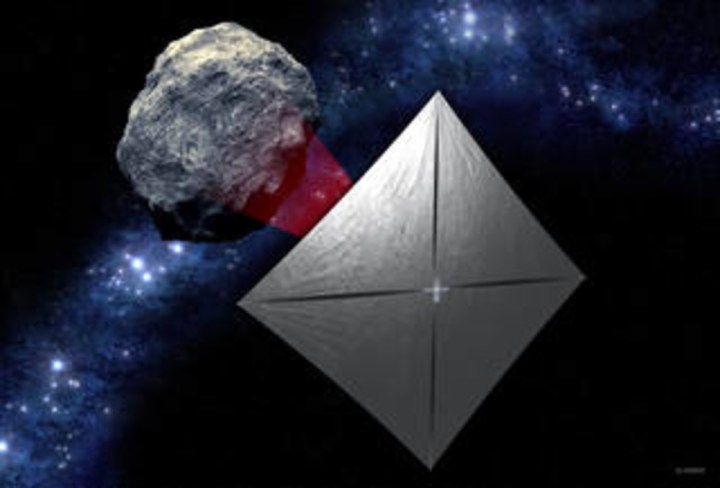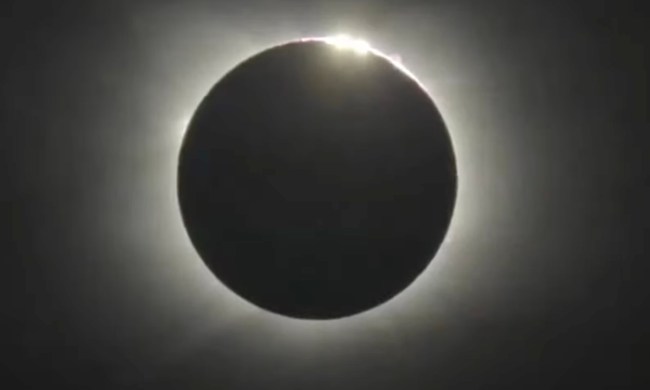
Following the success in 2019 of Bill Nye and the Planetary Society’s solar sail craft LightSail 2, NASA plans to launch its own solar sail project to investigate near-Earth asteroids.
The Near-Earth Asteroid Scout (NEA Scout) is a small satellite around the size of a shoebox that will sail through space powered by sunlight. The hardware will consist of a stainless steel boom structure across which a thin, aluminum-coated plastic sail will be stretched. The total area covered by the sail is around that of a racquetball court, and as photons from the sun bounce off the shiny surface, they will propel the craft forward.
As wacky as this idea sounds — it was made famous by, among others, science fiction author Arthur C. Clarke — it has been shown to work in low-Earth orbit by the LightSail project. Now NASA will take this one step further by deploying a solar sail in deep space.
“NEA Scout will be America’s first interplanetary mission using solar sail propulsion,” said Les Johnson, principal technology investigator for the mission at NASA’s Marshall Space Flight Center. “There have been several sail tests in Earth orbit, and we are now ready to show we can use this new type of spacecraft propulsion to go new places and perform important science.”
The big advantage of this method of propulsion is that the craft does not need to carry fuel, making it a very efficient way to send small masses long distances.
“This type of propulsion is especially useful for small, lightweight spacecraft that cannot carry large amounts of conventional rocket propellant,” Johnson said.

NEA Scout will catch a ride on NASA’s planned Artemis I mission around the moon, being deployed along with several other small CubeSats. Once it is released, the craft will use its solar sail to travel to a near-Earth asteroid to take high-resolution pictures of the asteroid up close.
“The images gathered by NEA Scout will provide critical information on the asteroid’s physical properties such as orbit, shape, volume, rotation, the dust and debris field surrounding it, plus its surface properties,” said Julie Castillo-Rogez, the mission’s principal science investigator at NASA’s Jet Propulsion Laboratory (JPL).
Learning about small asteroids, such as those less than 100 meters across, is important because asteroids of this size can be potentially dangerous to Earth. Somewhat counterintuitively, very large asteroids are considered less of a threat, as they are relatively easy to spot when they come close to Earth. But smaller asteroids are harder to identify.
“Despite their size, some of these small asteroids could pose a threat to Earth,” said Dr. Jim Stott, NEA Scout technology project manager. “Understanding their properties could help us develop strategies for reducing the potential damage caused in the event of an impact.”
The NEA Scout is scheduled to launch on the Artemis I mission in November 2021.


